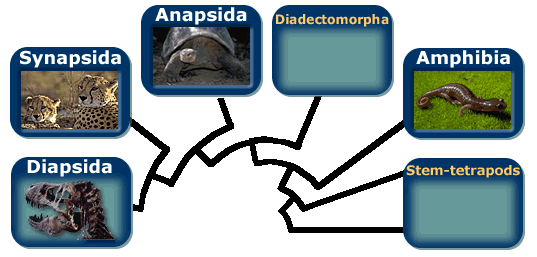



|
|
Tetrapods: SystematicsAnapsids (turtles and their extinct relatives), diapsids, and synapsids are Amniotes. The shell and membranes of the amniotic egg have allowed these organisms to move onto the land in a way that has not been possible for many other animals. The tetrapods have traditionally been classified into the groups amphibians, reptiles, birds, and mammals. These traditional groups, however, do not reflect the evolutionary history of the Tetrapoda. The extinct stem-tetrapods (a paraphyletic group) and diadectomorphs, for example, are not properly included in any of these categories. You may also have noticed that the birds do not have their own box in the cladogram; this is because they are one subgroup of the diapsids, a clade which includes dinosaurs, snakes, and most reptiles. Modern classifications of the tetrapods rely on the structure of the skull.
Cheetah and Cub photo and Galapagos Tortoise photo
courtesy Gerald and Buff Corsi © California Academy of Sciences.
|



